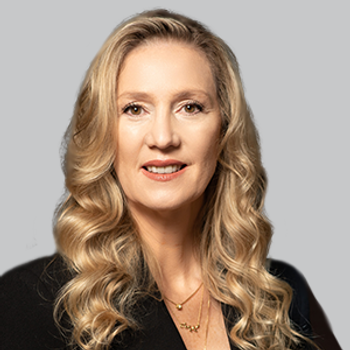
New Treatment Options Provide Relief for Migraine Sufferers

Migraine expert Teshamae Monteith, MD, describes how the University of Miami's inpatient migraine service has been a go-to resource for migraine help.
This content is courtesy of the University of Miami Miller School of Medicine. To view the original post,
For nearly 10 years, Cherise Irons suffered migraines so intense she sometimes blacked out while driving her car. Ultimately, it affected her ability to continue in her role as assistant principal at a Maryland high school.
“It's affecting my sleep. My appetite is gone, I'm starting to feel tingling in my fingers and toes,” she said, recalling a low point in her battle against migraines. “I'm lying on the desk at meetings. I'm not functional at all.”
But Irons found relief from her migraines at the University of Miami Health System, after consulting with migraine expert Teshamae Monteith, MD, associate professor of clinical neurology at the Miller School of Medicine. Monteith is the chief of UHealth’s headache division, a rare find in South Florida and the U.S.
“There are only so few academic headache programs as well as certified headache specialists within our nation,” she said. “At UHealth, we have a comprehensive center where we have not just our outpatient center but we have an infusion center as well as an inpatient center.”
Through UHealth’s inpatient migraine service, Irons received a combination of standard IV therapies and new medications. “We're able to offer treatments that actually have been around for quite a long time, but are unfortunately under-utilized, including intravenous dihydroergotamine, as well as lidocaine and sometimes ketamine infusions,” said Monteith.
By the third day of Irons’ hospital stay, she was relieved of all migraine symptoms. “No pain for me meant no pain in any form at all, so no nerve pain, no kind of tingling, no nothing,” she said.
Irons’ ongoing treatment includes a new drug for migraine prevention called Fremanazumab, one of three therapies designed specifically to treat migraines with a monthly injection. “Fremanazumab is a monoclonal antibody to CGRP, a protein that is implicated in migraine pathophysiology,” said Monteith, who played a key role in the research that brought this new drug to market. “Cherise has continued to do really well with this new treatment.”
During the height of her migraine attacks, coffee shops were off limits for Irons. They were too noisy, and she was not able to interact with others or even focus on her own work in a public space. Now, with more than 150 days without migraines under her belt, Irons has become a regular at Lady in the Mug, a coffee shop in Coral Springs, where she socializes and studies for a course she’s taking in ministry.
“There's no ceiling,” she said. “There's no limit on my life anymore. I get to do what I want, be where I want.”
Irons continues her treatments at home with monthly injections, a new option for patients. In July, the story of her journey back to health was recognized with an award in the American Migraine Foundation’s annual short film contest.
Although it can be hard to find physicians trained to treat headaches, migraine sufferers should not be discouraged, said Monteith. UHealth provides a full spectrum of care that includes access to psychologists and support for lifestyle changes that can help prevent migraines.
“If you’re suffering, get help,” Monteith said. “If you got help and you’re disappointed because you didn't have the outcome that you wanted, don't give up because your life is on the line. We have new treatments and new ways of thinking about migraine all the time.”
Newsletter
Keep your finger on the pulse of neurology—subscribe to NeurologyLive for expert interviews, new data, and breakthrough treatment updates.

























